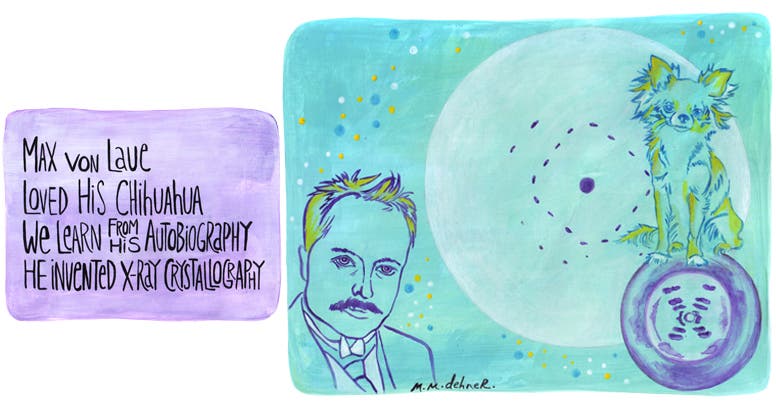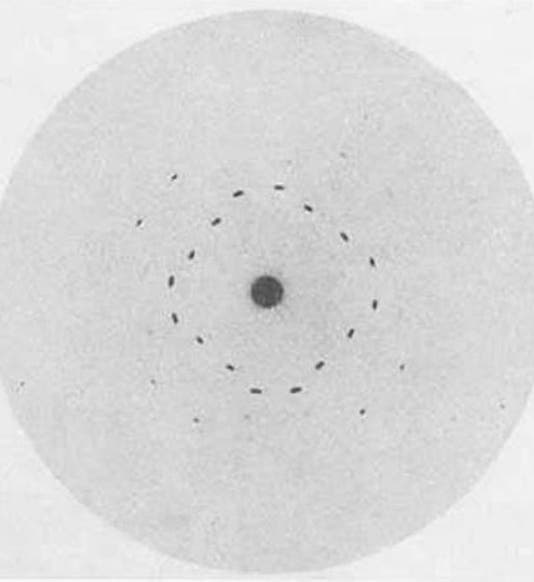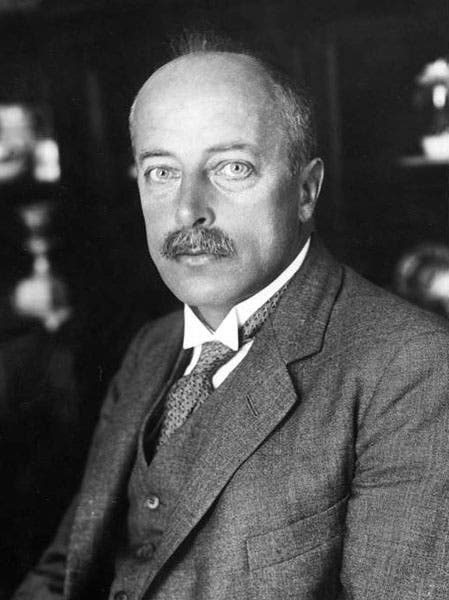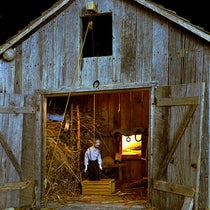Scientist of the Day - Max von Laue
Max von Laue, a German physicist, was born Oct. 9, 1879. In 1912, Laue hypothesized that if X-rays are electromagnetic waves, and if crystals have a regular lattice-like structure, then one might bounce X-rays off a crystal to produce an interference pattern that could be recorded on film, and which might contain information about the crystal structure. On Apr. 23, 1912, two technicians in Munich did such an experiment and successfully obtained an X-ray diffraction pattern. The very first photograph was lacking in detail, but within a year the results were much improved, as we see with the photograph above, published in 1913. The technique came to be known as X-ray crystallography, and it would prove invaluable in many fields. In 1953, when James Watson and Francis Crick were trying to determine the structure of DNA, the X-ray diffraction photographs of Rosalind Frankin, most notably “Photo 51”, helped suggest the double-helix pattern of DNA. Von Laue received the Nobel Prize in Physics in 1914 for his discovery.
During the rise of Nazism, von Laue was one of the few scientists who publicly raised his voice against the attempt to create a Nazi science. Upon the death in 1934 of Fritz Haber, a Jewish Nobel laureate who had been forced to flee Germany, von Laue wrote an obituary praising Haber and criticizing the government that drove him out. The most famous von Laue story concerns his Nobel Prize. He gave the actual gold medal to Niels Bohr in Copenhagen, to protect it from Nazi confiscation. When the Germans invaded Denmark, George de Hevesy (a future Nobel laureate himself) dissolved von Laue’s medal (and that of James Franck) in aqua regia and left the solution openly on a shelf in Bohr’s Institute. Hevesy (a Jew) then fled to Sweden. When he came back after the War, the jar was still there, undetected by the Germans, and the gold was recovered, sent back to Stockholm, and new medals were cast from the original gold for von Laue and Franck. Von Laue was presented his recast medal in 1950.
Von Laue died in a car accident in 1960 and was buried in Stadtfriedhof Cemetery in Göttingen, where no less than 8 Nobel laureates are interred, including Otto Hahn and Max Planck. Here is von Laue’s memorial stone.
We thought Max von Laue’s achievement merited a clerihew. As usual, the verse can be blamed on me; the calligraphy and the gouache drawing are the work of the talented Melissa Dehner.

Max von Laue, clerihew by the author, calligraphy and gouache drawing by Melissa Dehner (©Melissa Dehner)
Dr. William B. Ashworth, Jr., Consultant for the History of Science, Linda Hall Library and Associate Professor emeritus, Department of History, University of Missouri-Kansas City. Comments or corrections are welcome; please direct to ashworthw@umkc.edu.







